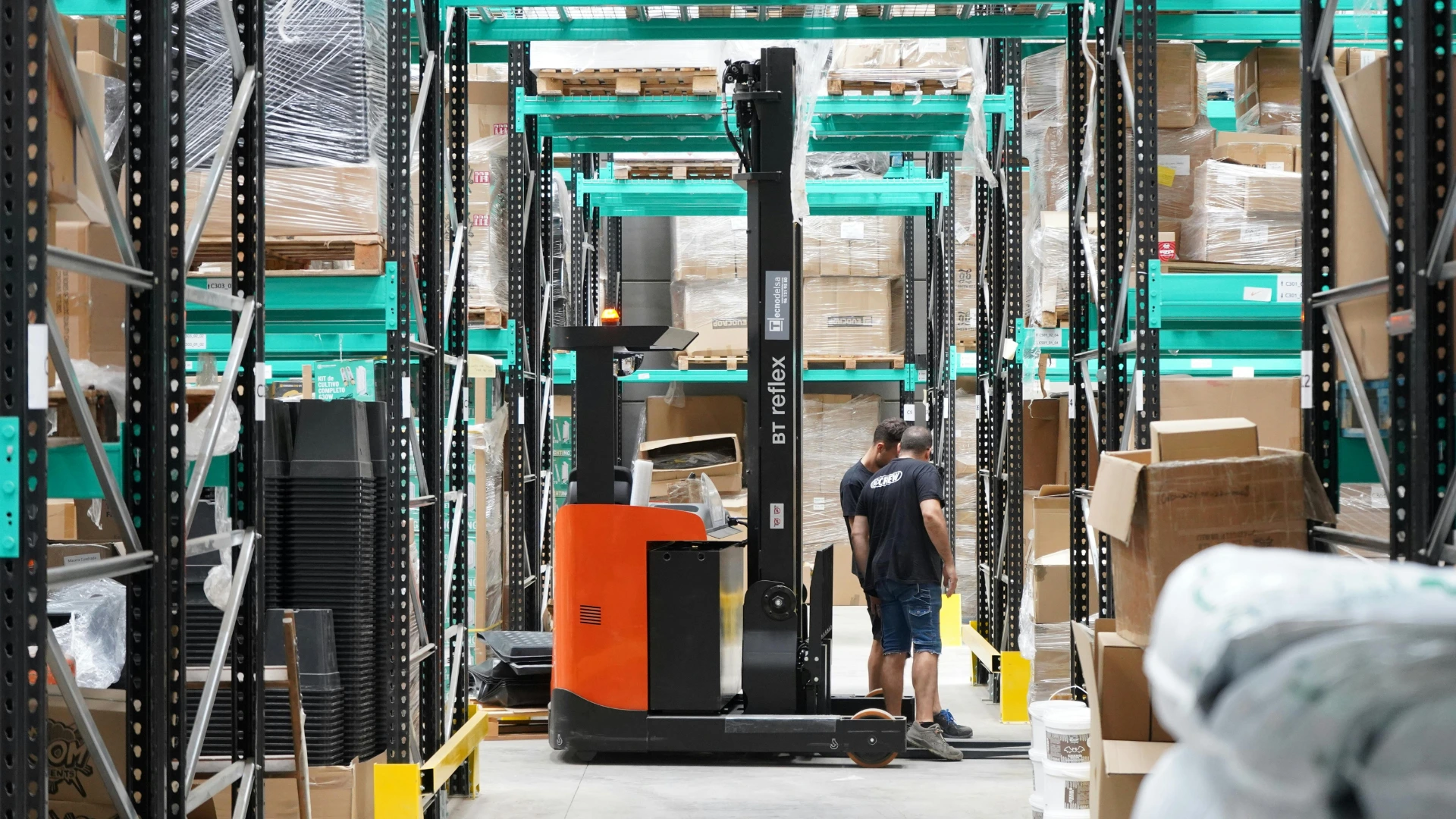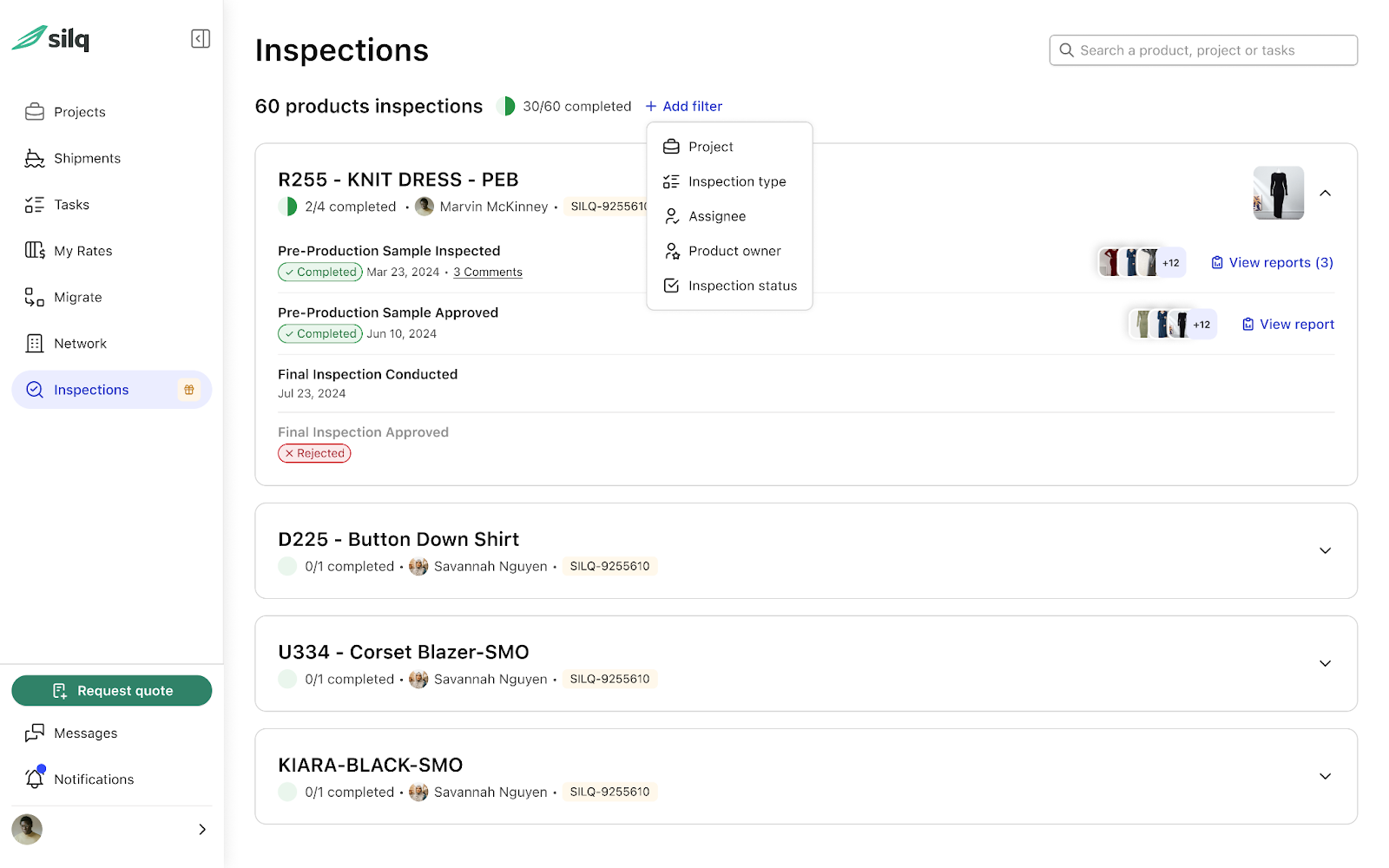How to Reduce Supply Chain Lead Time: 9 Strategies for High-End Brands

If you're managing a high-end supply chain, you already know: every day counts.
Whether it's a capsule collection for spring, limited-edition tech gear, or premium home goods, your customer doesn’t just want the best—they want it now. And in today’s environment of tight timelines and tighter expectations, long lead times can quietly drain your profits, kill agility, and sabotage launches before a single shipment leaves the port.
That’s why reducing lead time isn’t just an operational win, it’s a competitive advantage.
In this guide, we’ll break down:
- What lead time means in a modern supply chain
- What causes it to drag
- And most importantly, how to reduce lead time without sacrificing product quality or margins with Silq
If you’ve ever dealt with missed ETAs, surprise shortages, or the stress of reordering under pressure, this one’s for you.
What Is Lead Time in Supply Chain?
Lead time is the amount of time between when you place a purchase order and when the finished product arrives at your door (or warehouse). There are different types of lead time you’ll see across the value stream:
- Procurement lead time: From the PO to when raw materials arrive at your supplier’s facility
- Manufacturing lead time: The time it takes to run the production process, inspect, and package the goods
- Shipping time: From factory dispatch to final delivery at your warehouse
- Order processing time: The admin work in between
Altogether, these form your supply chain lead time—a critical KPI for brands managing complex sourcing, custom products, and high-stakes delivery timelines. And here’s the kicker: longer lead times = higher risk. The more steps, the more room there is for disruptions, such as natural disasters, stockouts, human error, or inefficiencies in your workflows.
Why Does Supply Chain Lead Time Reduction Matter?
If you're selling premium products, you’re operating on tight production schedules, short launch windows, and even shorter customer expectations. A two-week delay might mean missed delivery timeframes, markdowns, or even cancelled wholesale orders. Here's why reducing supply chain lead times should be at the top of your priority list:
- Boost customer satisfaction and brand trust with on-time order fulfillment
- Improve cash flow by avoiding excess inventory and high carrying costs
- Increase profitability by eliminating emergency air freight and last-minute labor
- Improve demand forecasting with shorter, more predictable cycles
- Build resilience against disruptions through smarter partnerships and planning
- Deliver a better customer experience that meets rising DTC expectations
What Causes Long Lead Times?
More often than not, long lead times are the result of misaligned systems. Some common culprits:
- Lack of real-time visibility into the manufacturing process
- Poor communication or unverified suppliers
- Delays in quality control and inspections
- Inefficient inventory management or poor visibility into stock levels
- Production bottlenecks or slow changeover between product runs
- Shipping disruptions, customs delays, or non-compliant paperwork
- Rigid just-in-time models without proper safety stock buffers
The result? Bloated manufacturing lead times, late orders, and panicked logistics teams.
This is exactly where tools like Silq’s platform and on-ground inspection network come in. By providing factory inspections, production visibility, and real-time updates on supplier performance, Silq helps importers spot issues early—before they become delays. Whether it’s catching product defects during production or flagging a late shipment before it misses cutoff, the Silq platform keeps your team proactively informed and in control.
Better still, all inspection footage, reports, and production milestones are centralized in one platform, making it easier to track cycle time, compare supplier performance, and tighten up your lead time from purchase order to finished product. With Silq, you don’t just identify lead time risks—you fix them, faster.

9 Ways to Reduce Lead Time in Your Supply Chain
Here’s how today’s most efficient brands are optimizing their operations for shorter lead times—without compromising quality.
1. Digitize Order Workflows
Manual procurement can be a silent killer of speed in high-end supply chains. Paper-based processes, endless email threads, and manual approvals all add unnecessary wait times, not to mention the risk of human error or missed communication with overseas vendors in different time zones. When your order processing system isn’t optimized, even a simple purchase order can take days to push through, delaying everything downstream—from raw material sourcing to the start of the production process.
By digitizing your procurement workflows, you can:
- Track vendor responses and fulfillment status
- Centralize communication across sourcing, logistics, and finance
- Reduce administrative overhead and improve cycle time
- Flag delays before they spiral into full-blown lead time issues
Leading brands use platforms like Silq to streamline this process and move from reactive to proactive. All your POs, inspection schedules, and production milestones are integrated into one centralized dashboard, giving you and your team real-time insights and tighter control over vendor timelines.
2. Vet and Score Suppliers
Strong supplier relationships create accountability, and that starts with visibility. Track supplier performance across responsiveness, on-time delivery, quality issues, and production consistency. The more data you have on your partners, the easier it is to avoid bottlenecks and maintain control over the manufacturing process.
Pro tip: Silq clients use our on-site inspections and performance scorecards to continuously verify supplier reliability. With Silq Edge, you get 2 free supplier audits to help you spot risks early, validate capabilities, and make smarter sourcing decisions.
3. Inspect During Production, Not After
Waiting until the end of production to check for quality issues is like discovering a leak after the ship has sailed. By the time you catch a defect post-production, you’ve already invested time, materials, labor—and in many cases—freight bookings. The fix? Inline inspections.
Conducting inspections midway through the production process enables your team to identify defects early, ensure that the correct specifications are being followed, and prevent delays caused by last-minute rework or rejected shipments.
This not only improves product quality but also reduces your overall manufacturing lead time. It ensures that any corrective actions are taken while the product is still on the line, not sitting in a warehouse waiting to be fixed. By shifting quality control upstream, you eliminate surprises at the end of the line—and get closer to consistently meeting your promised delivery times.
4. Reorder Smarter with Inventory Visibility
When brands reorder reactively—waiting until stock runs low or a customer complains—shortages and missed ship dates become inevitable. This scramble leads to expedited shipping, emergency production runs, and a ripple effect of costs and delays across the supply chain.
The smarter approach? Proactive replenishment based on real-time visibility into stock levels, sales trends, and customer demand. By aligning your reorder points with actual consumption data, you can reduce the need for excess safety stock while avoiding stockouts.
5. Improve Demand Forecasting
Poor demand forecasting doesn’t just affect sales—it disrupts your entire supply chain. Missed projections can lead to production gaps, stockouts, or warehouses full of unsold inventory that eats into your margins. This is especially risky for high-end brands dealing with seasonal product lines, limited drops, or high-SKU assortments, where timing and accuracy are everything.
Instead of relying on gut feel or supplier estimates, use a data-driven approach that combines:
- Historical sales performance
- Seasonality and trend analysis
- Promotional calendars
- Retailer and DTC demand signals
- Real-time order activity
Read More: DTC Shipping Optimization | Free Blueprint
6. Diversify Sourcing Locations
Relying too heavily on a single sourcing region, whether it’s China, Vietnam, or anywhere else, leaves your supply chain vulnerable. A single port closure, political disruption, or weather event can bring production to a halt and delay shipments for weeks. This risk is especially high for high-end brands with tight production schedules, seasonal collections, or rigid launch windows.
The solution? Diversify your sourcing strategy across multiple regions—and when possible, incorporate local suppliers to reduce shipping time, mitigate risk, and create more flexible fulfillment options.
Diversification offers several advantages:
- Reduced dependency on any one country’s logistics ecosystem
- Faster response times by balancing lead times across geographies
- Built-in resilience during natural disasters, policy shifts, or capacity shortages
- Opportunities to balance price, product quality, and turnaround time
Read More: Strategies and Considerations for Diversifying Beyond China
7. Use Shared Container Loads (SCL)
Waiting to fill a full container before shipping can be one of the most avoidable causes of long lead times. For high-end brands with smaller, high-margin SKUs, low-volume orders often sit idle at factories or consolidation hubs, burning time and slowing down order fulfillment.
Leverage Shared Container Loads (SCL) to ship smaller volumes more frequently. Instead of holding inventory until you hit full container capacity, SCL allows you to share space with other importers headed to the same destination. This helps you:
- Ship more flexibly, on your timelines
- Avoid the delays of warehouse overflows and consolidation bottlenecks
- Reduce warehousing and carrying costs by keeping stock lean
- Meet customer expectations with faster restocks and shorter delivery times
Read More: Shared Container Load (SCL) Shipping | Beginner’s Guide
8. Simplify Customs Compliance
Customs clearance can be a black hole for lead time—especially when classification mistakes or incomplete paperwork trigger inspections, detentions, or surprise duties. For high-end goods with unique materials or components, even a minor misstep in classification can result in days of delivery time lost at the border.
To stay ahead, brands need to take a proactive approach to customs compliance. That means:
- Ensuring correct HS code classification
- Estimating landed costs across multiple sourcing origins
- Preparing compliance documentation well in advance of shipment
- Avoiding duty overpayments that chip away at profitability
Watch: Silq x Importal | Hidden Costs in Customs You Can’t Ignore
9. Track the Right Metrics and Keep Improving
What gets measured gets improved. Without clear data on where delays are happening, most teams end up reacting to fire drills instead of preventing them. In modern supply chain management, continuous visibility is the foundation of continuous improvement. To effectively reduce lead time and build long-term efficiency, you need to monitor key supply chain KPIs, such as:
- Delivery time
- Late purchase order rates
- Defect rates and product quality trends
- Supplier performance scorecards
- Frequency of stockouts and shortages
Tracking these metrics helps identify patterns, reveal weak links, and guide smarter decision-making across procurement, logistics, and inventory planning.
Supply Chain Lead Time as a Competitive Lever
Reducing lead time is about more than speed: it’s about protecting your margins, delivering on your brand promise, and meeting customer expectations without the panic. By investing in better workflows, smarter partnerships, and tools that provide real-time visibility into your manufacturing process, you can reduce risk, optimize planning, and build a supply chain that moves as fast as your business.
Curious where your lead time bottlenecks are hiding? Talk to a Silq expert and get a free consultation on how to streamline your sourcing, inspections, and freight workflows—from purchase order to order fulfillment.
Ready for Supply Chain Predictability?
Importers using Silq ship smarter, safer, and with total control.







